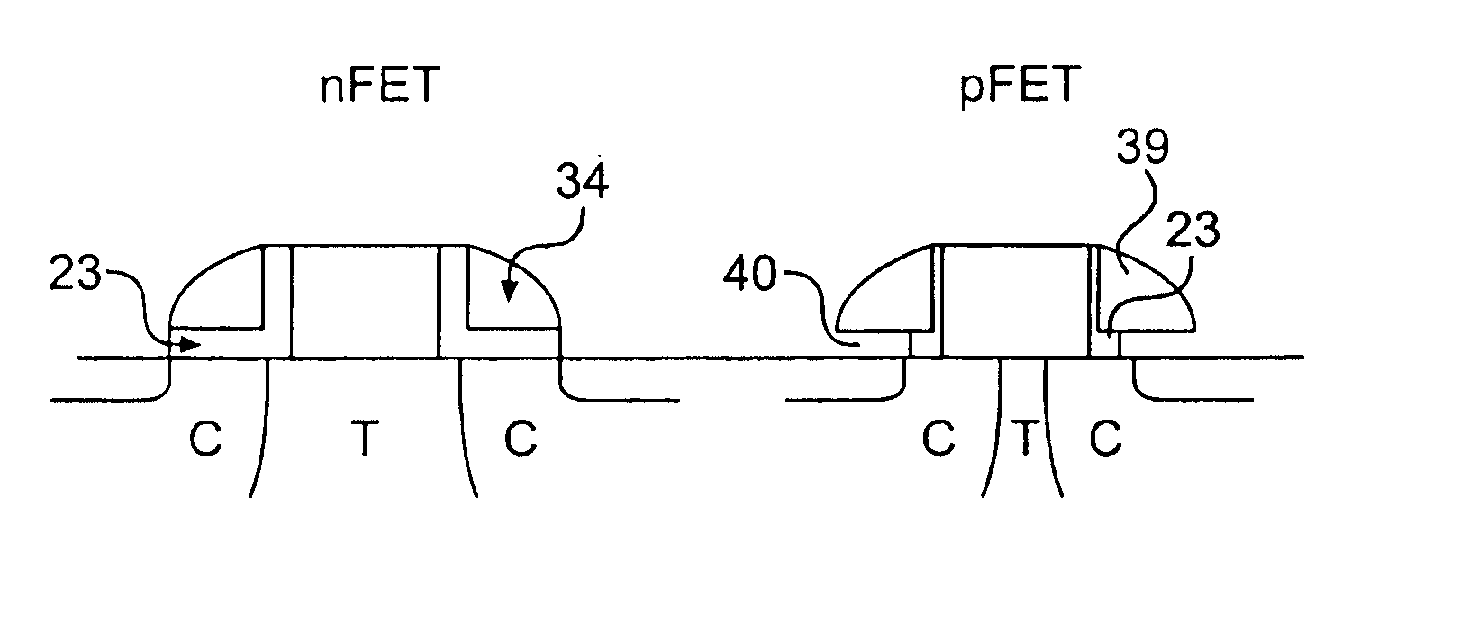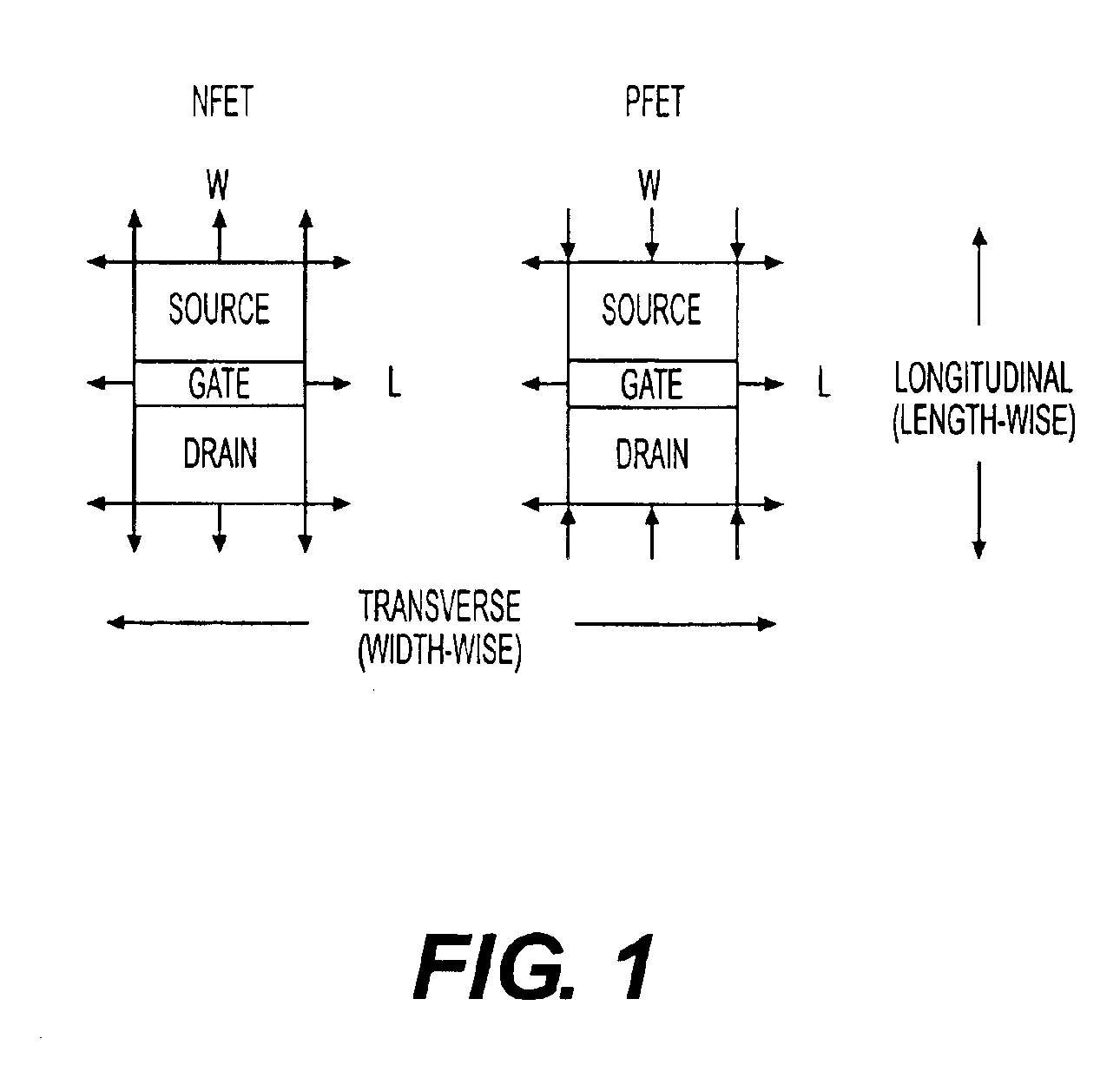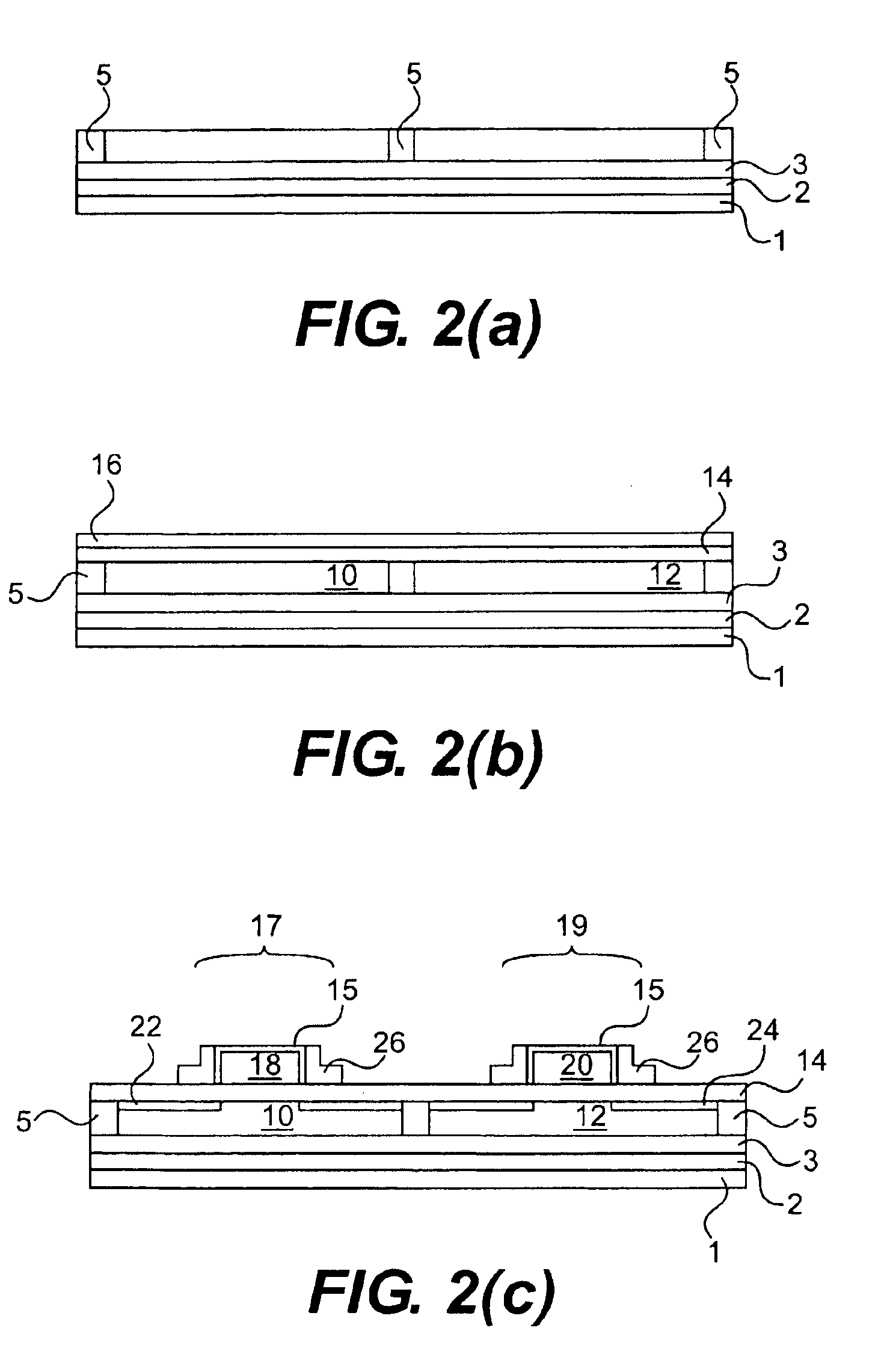Silicide proximity structures for CMOS device performance improvements
a proximity structure and semiconductor technology, applied in the direction of semiconductor devices, electrical equipment, transistors, etc., can solve the problems of higher cost, disadvantageous to the performance of pfet, and beneficial to the performance of an n
- Summary
- Abstract
- Description
- Claims
- Application Information
AI Technical Summary
Benefits of technology
Problems solved by technology
Method used
Image
Examples
Embodiment Construction
The invention provides a method for fabricating devices with improved performance characteristics. The invention relates to the improved characteristics of a device. Generally, silicidation is known to create significant stresses in the silicon and that stress distributions resulting from silicidation are highly nonuniform. These properties of silicidation are used by the invention to control the stresses in complimentary metal oxide semiconductor (CMOS)PFETs and NFETs. In an embodiment of the invention, different spacer widths and undercut combinations are used to modulate silicide distances in order to control the stress in the channels of NFET and PFET devices.
In the methods and devices according to the invention, the stresses are self-aligned to the gate. In the devices formed with the isolation induced stress structures, the stresses are not self-aligned to the gate. In addition, in the methods and devices according to the invention, the stress levels attained under the gate in...
PUM
 Login to View More
Login to View More Abstract
Description
Claims
Application Information
 Login to View More
Login to View More - R&D
- Intellectual Property
- Life Sciences
- Materials
- Tech Scout
- Unparalleled Data Quality
- Higher Quality Content
- 60% Fewer Hallucinations
Browse by: Latest US Patents, China's latest patents, Technical Efficacy Thesaurus, Application Domain, Technology Topic, Popular Technical Reports.
© 2025 PatSnap. All rights reserved.Legal|Privacy policy|Modern Slavery Act Transparency Statement|Sitemap|About US| Contact US: help@patsnap.com



